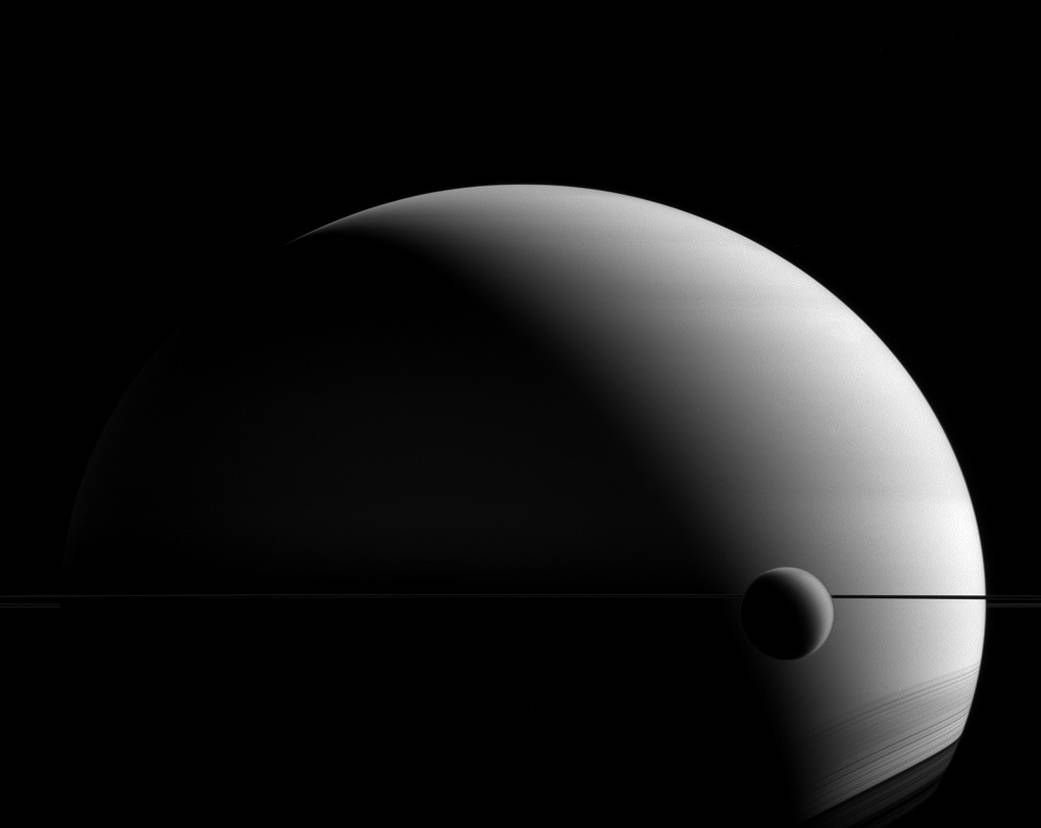Titan and Saturn have very few things in common, but a hazy appearance is one feature they share. Though they appear similar in this image, appearances can be misleading.
Although both Saturn and Titan (3,200 miles or 5,150 kilometers across) have thick atmospheres and are covered in clouds, their differences are significant. Saturn is a gas giant with no solid surface to speak of. Titan’s atmosphere is a blanket surrounding an icy, solid body. Even their atmospheric compositions are different; Saturn is mostly hydrogen and helium with clouds of water and ammonia and ammonium hydrosulfide. Titan’s atmosphere is primarily nitrogen with methane clouds.
This view looks toward Saturn from the unilluminated side of the rings, 0.3 degrees below the ring plane. The image was taken in visible green light with the Cassini spacecraft wide-angle camera on May 22, 2015.
The view was obtained at a distance of approximately 1.4 million miles (2.2 million kilometers) from Saturn. Image scale is 81 miles (130 kilometers) per pixel.
The Cassini mission is a cooperative project of NASA, ESA (the European Space Agency) and the Italian Space Agency. The Jet Propulsion Laboratory, a division of the California Institute of Technology in Pasadena, manages the mission for NASA’s Science Mission Directorate, Washington. The Cassini orbiter and its two onboard cameras were designed, developed and assembled at JPL. The imaging operations center is based at the Space Science Institute in Boulder, Colorado.
For more information about the Cassini-Huygens mission visit https://www.nasa.gov/cassini and http://saturn.jpl.nasa.gov. The Cassini imaging team homepage is at http://ciclops.org.
Credit: NASA/JPL-Caltech/Space Science Institute



























